Search
To search for an exact match, type the word or phrase you want in quotation marks.
A*DESK has been offering since 2002 contents about criticism and contemporary art. A*DESK has become consolidated thanks to all those who have believed in the project, all those who have followed us, debating, participating and collaborating. Many people have collaborated with A*DESK, and continue to do so. Their efforts, knowledge and belief in the project are what make it grow internationally. At A*DESK we have also generated work for over one hundred professionals in culture, from small collaborations with reviews and classes, to more prolonged and intense collaborations.
At A*DESK we believe in the need for free and universal access to culture and knowledge. We want to carry on being independent, remaining open to more ideas and opinions. If you believe in A*DESK, we need your backing to be able to continue. You can now participate in the project by supporting it. You can choose how much you want to contribute to the project.
You can decide how much you want to bring to the project.
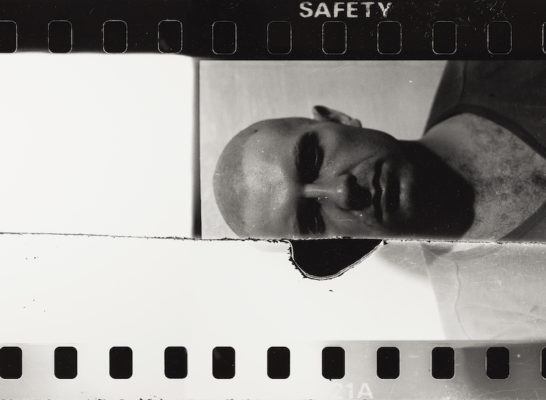
Last week I heard this sentence: “Everything an artist do when telling stories about others is out of focus”. And some months ago I also heard this one: “I can’t represent anyone, or tell anyone’s story but my own. So if I want to speak for communities or people outside myself, collaboration is the only possibility to create an ethical narrative”. That’s why Raimund Kummer’s artistic position seems honest to me. And so it is his anthology and self-retrospective at the Hochschule für Bildende Künste (HBK) Braunschweig.
A two-part exhibition, it expands likewise across two venues at the Braunschweig University of Art (HBK). Kummer weint (Kummer cries) is in the Montagehalle, and displays a compilation of black-and-white photographs set in opposition as self-retrospective extractions. And the other, Schliess die verdammten Eisfach! (Shut the damn freezer!), in the Hochschulgalerie, shows and hybrid sculpture. The two exhibitions have in common that the works are being shown for the first time —unbelievable but true, specially when we are talking about a career that spans over 40 years.
The point is that the works have been discovered and reevaluated through comprehensive research undertaken for Kummer’s Catalogue Raisonné. The material exhibit address both, his spectrally rich life’s work as well as the historiographic-artistic “view of the self”.
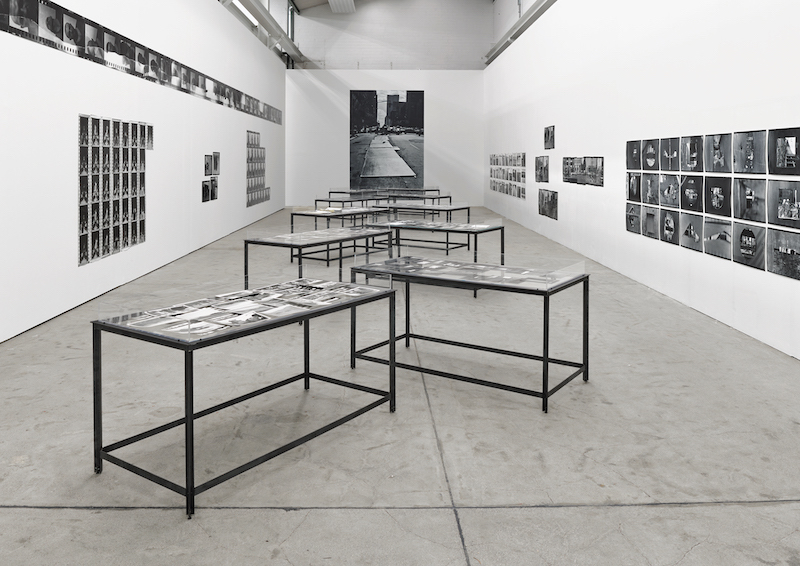
Installation view ‘Kummer weint,’ 2022 at Montagehalle of the HBK
I visited first Kummer weint —”sadness cries”, incidentally a play on words since kummer in German means sorrow, sadness— which is divided into two rooms as well. In there, we came across the sensual presence of more than a 1.000 black-and-white baryta paper vintage prints (analogue and digital); screen prints behind glass; and xerographic books, covering the period from 1976 to the present day. According to the artist, the rooms are set as a game of opposites: on the side walls, as well as on the front and back walls, it can be seen private scenes versus public ones. Along with, the added display elements, such as showcase tables and movable walls, are arranged as if it were a gigantic zipper that unites his private life with his exercise for life, that is, his art works.
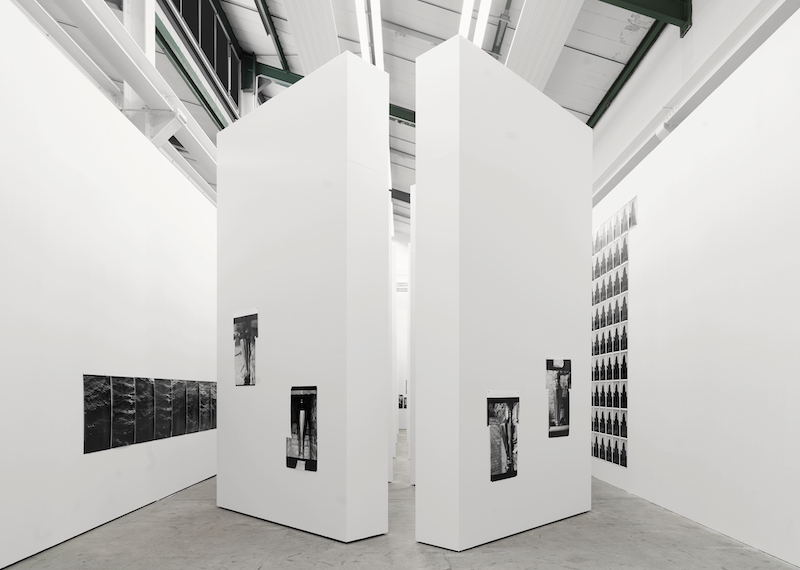
Installation view ‘Kummer weint,’ 2022 at Montagehalle of the HBK
Regardless of the selfies flooding the social networks, whether or not they are aimed at the self-representation of a generation that was born with a smart electronic device in its hand, the self portraits of Raimund Kummer were taken at the same range of age of that generation now known as millennials. An age in which we question ourselves what are we and who are we. Belonging to other time and criteria, the selection of photographs focuses on his photographically exposed artistic process of identification. To highlight, a series of photographic performance self-observations from 1980 entitled Cut, Kummer schneidet, Kummer rasiert and Kummer schwärzt. Similar in composition, they explore processes where the artist alters his appearance.
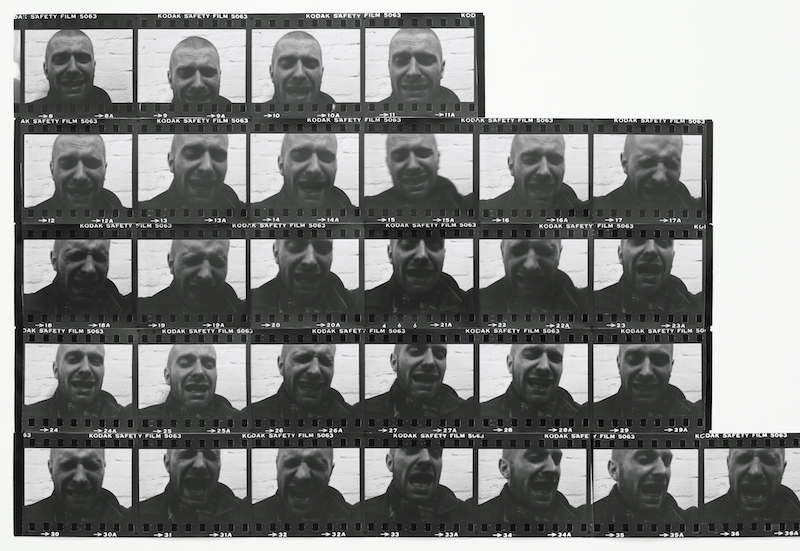
Installation view Raimund Kummer, ‘Kummer cries’, 1980. Gelatin silver print on baryta paper, 30 parts, each 40 x 43 cm
The focus on the pros and cons of documentation and the instability of marginal, ephemeral artistic works produced during the anarchic divided Berlin of the 1980s, full of artistic energy and empty spaces, intelligently paves the way for the change of paradigm on the second part of the exhibition, Schliess die verdammten Eisfach! A complex sculptural arrangement in which sound, text and digital film projections surround a central, space-filling resonance body. As one’s eyes adjust to the dim light, approximately 1.000 titles from the sculptor’s Oeuvre come to our ears recited by a woman. The sound expands through eight loudspeakers suspended above the aluminium frames, the feminine voice vanishes into the space.
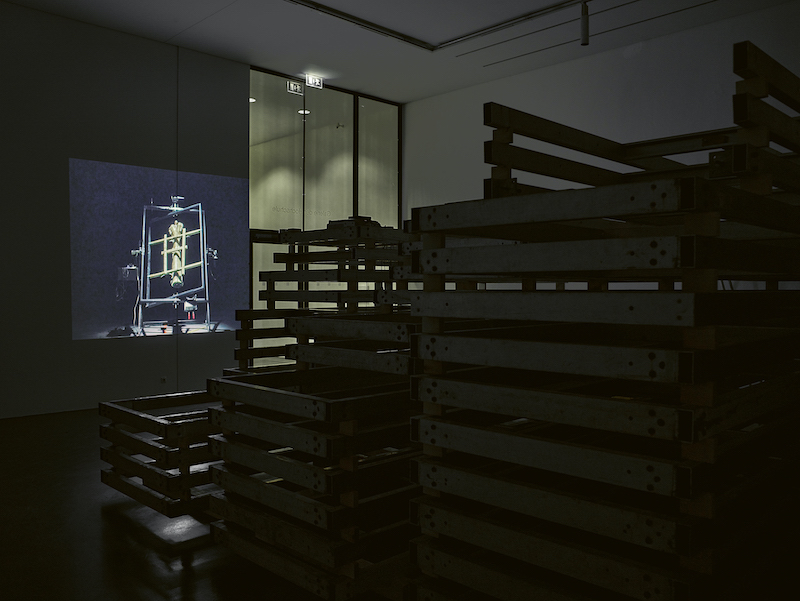
Installation view, Raimund Kummer, ‘Schliess die verdammten Eisfach!’, 2016 at Hochschulgalerie of HBK
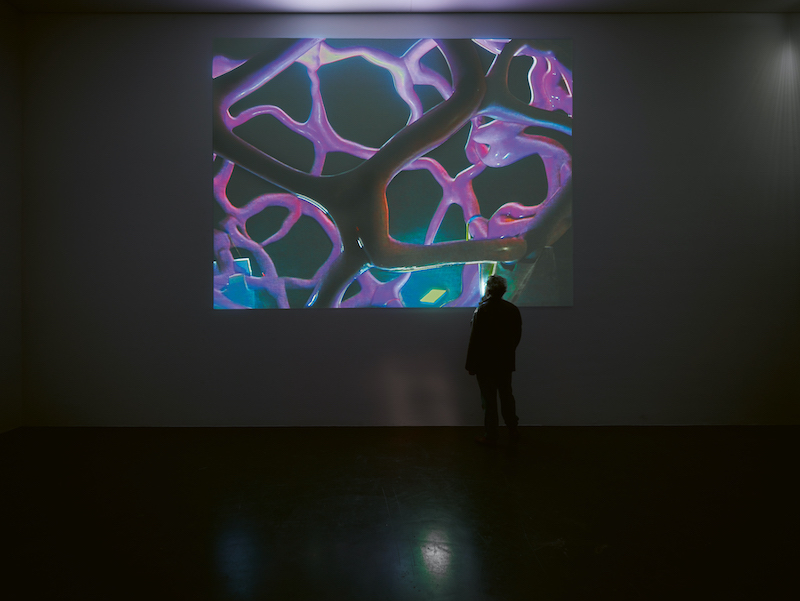
Installation view, Raimund Kummer, ‘Schliess die verdammten Eisfach!’, 2016 at Hochschulgalerie of HBK
Throughout his long career Kummer has made works from the near-to-hand, out of the circumstances he finds himself in, streets and buildings and his own body. From his early experimental black-and-white photos in which he is like a young man trying to assert some agency in solitary, to his later sculptural installations, Raimund Kummer has contributed significantly to the expansion of material and sculptural concepts and has reintegrated narrative as a category in contemporary sculptural practice.
As a young artist, Kummer listens to, absorbs, and adopts all promiscuous elements of the art fields on his own terms which sediment this retrospective exhibition covering around 50 years of career. Either by his glimpses from the past into the future, the fiction of a biography, or the unexpected use of photography, be that as it may, the history of contemporary Western art could be follow through Kummer’s own journey.

Installation view ‘Kummer weint,’ 2022 at Montagehalle of the HBK

Raimund Kummer: ‘Kummer schneidet – Kummer rasiert,’ 1980. Gelatin silver print on baryta paper, 37 parts, each 35 x 30 cm
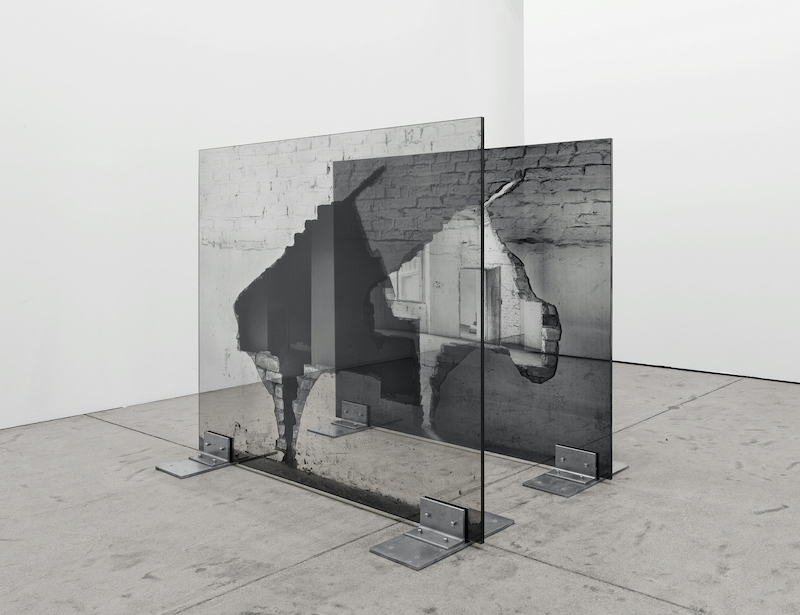
Raimund Kummer, ‘Piano’, 1981/2021. 2-part silk screen print laminated between opti white glass, stainless steel brackets
200 x 160 x 261 cm

Raimund Kummer, ‘Lafayete Street’, negative form, 1981. Gelatin silver print on baryta paper, 3 parts, 64 x 136,5 cm

Raimund Kummer, ‘Glashaus recycled, 2’, 2011; ‘Glashaus recycled, 1’, 1982. Gelatin silver print on baryta paper each 60,5 x 50,5 cm

Raimund Kummer, ‘TGV-Projet Pilote’, 1982, detail. Gelatinn silver print on baryta paper
All photos by Martin Salzer © VG Bild-Kunst, Bonn
(Front pic: Raimund Kummer: ‘Cut,’ 1980, detail. Gelatin silver print on baryta paper, 40 parts, each 50 × 56,5 cm)

María Muñoz-Martínez is a cultural worker and educator trained in Art History and Telecommunications Engineering, this hybridity is part of her nature. She has taught “Art History of the first half of the 20th century” at ESDI and currently teaches the subject “Art in the global context” in the Master of Cultural Management IL3 at the University of Barcelona. In addition, while living between Berlin and Barcelona, she is a regular contributor to different media, writing about art and culture and emphasising the confluence between art, society/politics and technology. She is passionate about the moving image, electronically generated music and digital media.
Portrait: Sebastian Busse
"A desk is a dangerous place from which to watch the world" (John Le Carré)